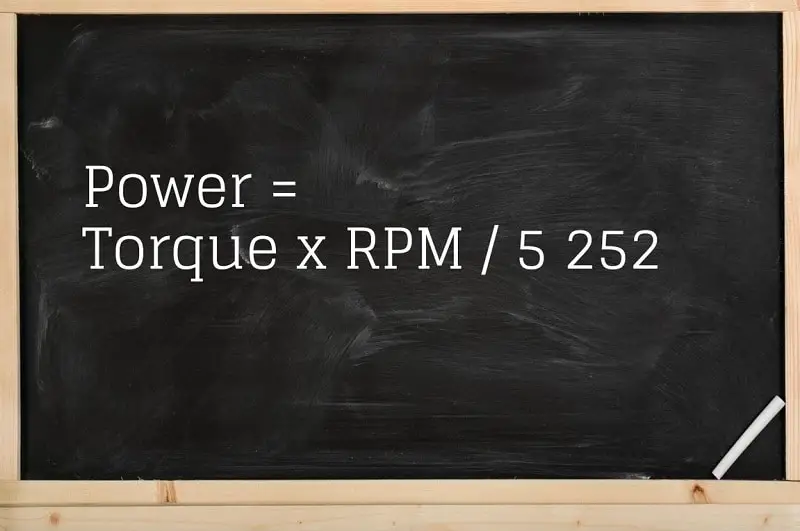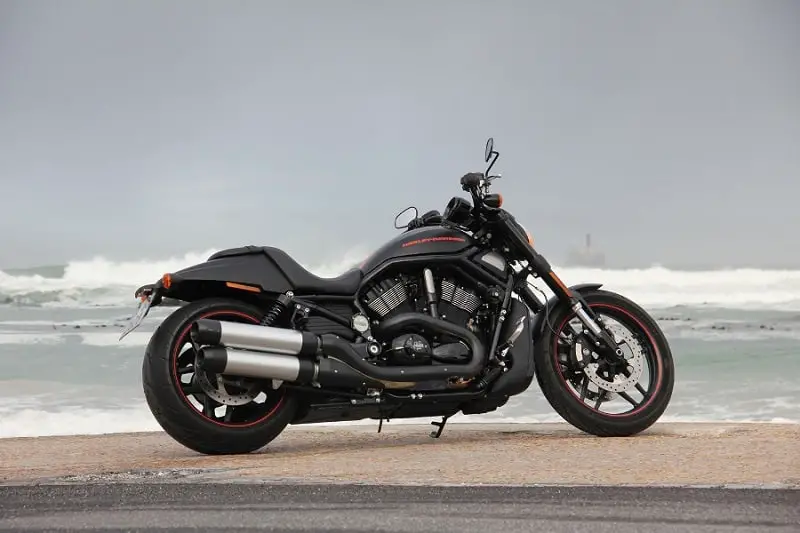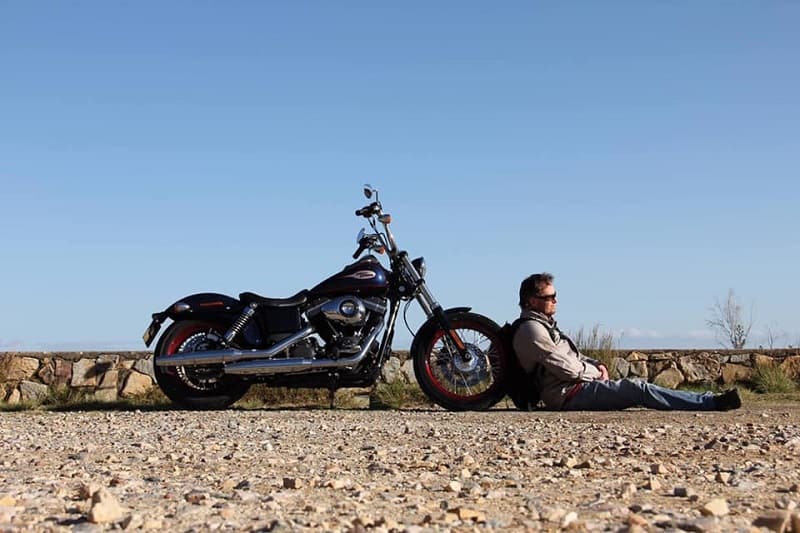You don’t have to know much about motorcycles to know that cruisers, like Harley-Davidson bikes, are slower than sport bikes and tourers. But if you consider that most Harley engines are at least 1 750 cc in size, yet deliver less power than a 600 cc supersport motorcycle, it begs the question: Why are cruisers so slow and under-powered?
Cruisers, like Harley Davidson bikes, are slower than sports bikes because they have push-rod valve trains and are air-cooled, and can therefore not operate at high engine RPMs to develop lots of power. In order to get these heavy machines moving, big displacement engines are used that deliver large amounts of torque low in the RPM range.
Many bikers online, and off, scoff at cruisers. Harley Davidson riders are judged especially harshly for being rich, old amateurs that only just pop over to the pub once a week and keep the bike garaged in the living room the rest of the time. The ‘real’ bikers in the forums believe cruisers are slow because the owners don’t know how to ride.
Others believe cruisers are designed to cruise. They are not designed to be raced or flicked around in the mountain passes. So which one is it? Slow bike or so biker?
Why are Cruisers Slower Than Sports Bikes?
Cruisers have a very distinctive look. Feet forward, arms in the air, often with very little or no wind protection. Love it or hate it, the styling and riding position is what cruisers are all about. That’s okay, style is subjective. But why does that have to make them slow? There are basically two main reasons: 1) the engine, and 2) the chassis design.
Cruisers have high torque, low powered engines
While most brands have moved on to newer technology, the quintessential cruiser, the Harley Davidson, still uses push-rod technology and air-cooled engines. As a result of the styling and design of the bikes, there is less airflow into the engine and less heat dissipation to cool it. This is not a technical essay, but in short, these engines cannot rev as high as modern liquid-cooled engines found in most other bikes.
Okay, so a Harley has a red-line of 5 500 RPM and most sport bikes only come alive above 10 000. Why does that result in less power and speed? I’ll try not to get too nerdy here. When we talk about torque and power, there are basically only two things we can measure. Torque in pound-foot (Lb-Ft) is one of them, and the other is engine speed in revolutions per minute (RPM). Horse power (HP) is calculated, not measured, as follows:

Don’t stress about the detail, but it is clear from the above formula that in order to develop more power, you need to rev the engine higher. Engine RPM is a very clear limiting factor when it comes to horsepower.
Cruisers are big and heavy. To get these overweight machines to move, requires a lot of torque. Since the engines cannot rev very high, they compensate with size. The new Harley Milwaukee Eight 114 is 1 868 cc. These big displacement engines develop massive amounts of torque low down in the rev range. You will feel the pull from as low as 2 000 RPM, whereas a sports bike will feel lethargic below Harley’s red line of 5,5 grand.
Cruisers are not designed for speed
Apart from the limited number of horses in the stable, the distinctive design of a cruiser will limit your progress in other ways. With a backward seating position, legs stretched out in front of you and arms up high, you’ll be hanging on for dear life at highway speeds. Not having a windscreen doesn’t help either.
To be fair, many modern Harley Davidson Touring bikes have tall screens and very comfortable seats. You can easily cruise at well above the speed limit, listening to your radio with the cruise control set to 80 mph. It is in the twisty mountain passes that you’ll remember that you are not on a nimble sports bike.
With the rearward seating position, low-hanging foot pegs and long rake (the angle of the front forks and steering) a cruiser just does not handle as well as a any other bike. That said, the fat tires have lots of grip past the point where the pegs start scraping and the ABS brakes on modern cruisers will slow it down much quicker than you think.
An experienced rider on a cruiser will easily leave a newbie on a super bike behind over a winding mountain pass. But a third, experienced sports bike rider ,will leave both of them in her rear view mirror.
Going fast is just not high up on the priority list of the cruiser’s target market.
Can You Go Fast on a Cruiser?
If cruisers don’t have heaps of horsepower due to running out or revs at between 5 000 and 6 000 RPM, can they still be quick? Well, yes. With 111 Lb-Ft of torque from as low as 2 260 RPM, the H-D Milwaukee Eight 114 cubic inch, will pull away like a canon ball. That’s 2 Lb-Ft shy of what a CBR 1000 RR Fireblade delivers at its peak torque which only happens at a revvy 12 500 RPM.
Your definition of fast may differ from the next. If you mean lap times around a race track, forget it. If it is maximum speed, the Harley will disappoint you shamefully. But if you are looking for an adrenaline rush each time you grab the throttle, you’ll easily have more fun on a Harley than a super bike on the road.
I remember testing the 21st-anniversary edition of the Honda Fireblade to see what road speed it will reach in 1st gear at the red line. I reached 96 mph before shifting to 2nd and I didn’t even touch the rev limiter. That will land you in serious trouble. What’s the point of having 215 wild horses between your legs, if you are not allowed to let them run wild on the road. There is just no way you can ride a litre sports bike hard on the road without breaking the law.
On a Harley, or any cruiser for that matter, you can. Apart from the sound, there’s just mountains of torque no matter what gear you are in. Grab a handful, and you blast forward. It is only once you reach jail-time speeds that you run out of serious pull.
If you are not too self conscious to be seen on a cruiser (get a dark face shield) and you are looking for a higher revving motor, the Yamaha V-Max has a liquid-cooled V-4 engine that makes 145 hp at 9 000 RPM. One of my favorite Harleys I’ve tested was the V-Rod Night Rod Special. With its 1 250 cc liquid-cooled V-Twin Revolution engine, it had a 9 000 RPM red line and I saw 75 mph in fifth (top gear) at a mere 4 000 RPM on the tacho. Above that, the wind was giving me too much of a workout, but it was not nearly out of breath.

On another road trip, Harley allowed me to choose any model from their bike line-up for a two-day road trip. I chose the screen-less Dyna Wide Glide to make for cool photos, but also to see whether I will survive a one-night, 500 mile trip, on fast country roads.

Apart from the wind at high speeds, I had a blast. The mountain passes were especially fun, as you simply wind on the throttle in any gear and it moves. No needing to work your way through the transmission.
Conclusion
Wondering why cruisers with big engines are slower than sports bikes, is almost like asking why a 3.6 liter V6 Jeep Wranger is so much slower around corners or in a straight line than a 2.7 litre Porsche Cayman. They are just not made to do the same thing.
All I can say is that, even though I am not a Harley fan and I also subconsciously judge their owners, every time I get onto one I just ‘get it‘. There’s something on a Harely Davidson that just makes me smile.
